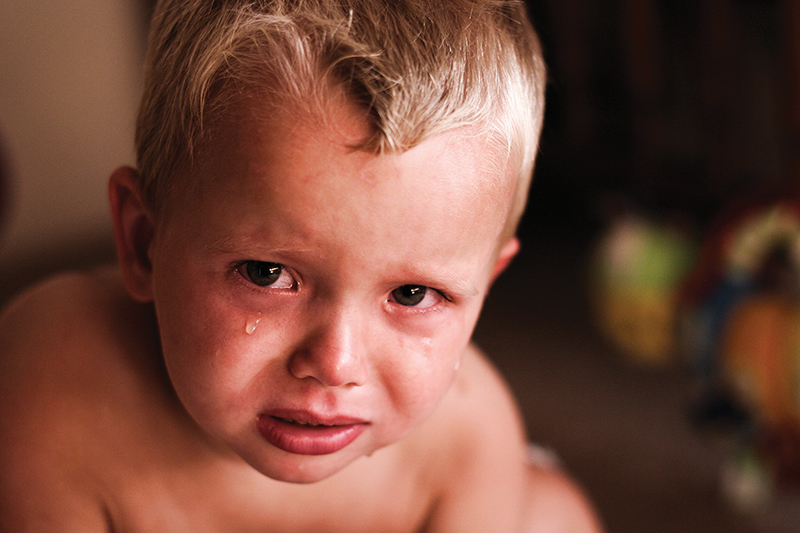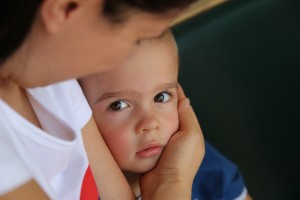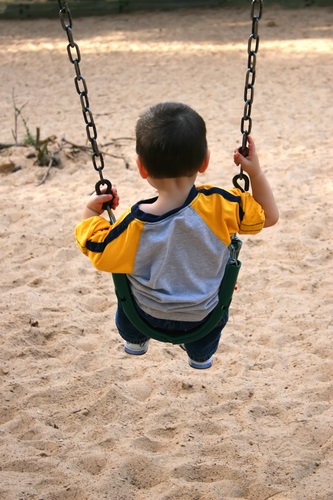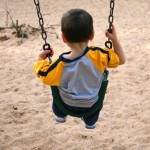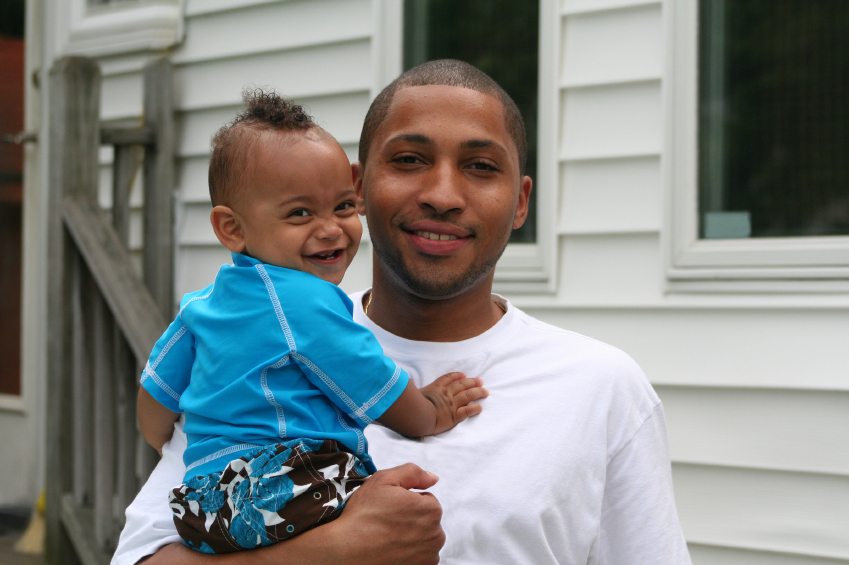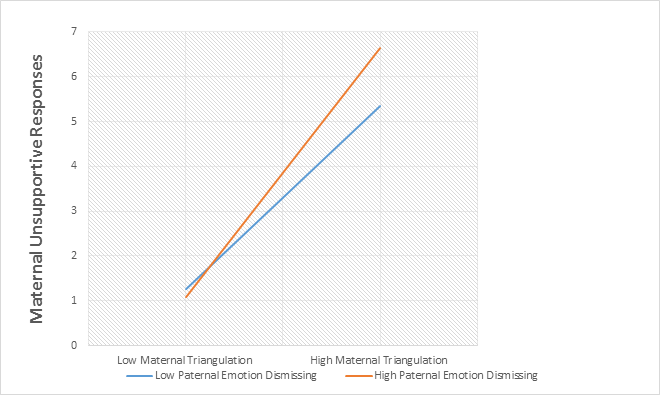Reprinted from The Infant Crier, July-September 2005
John Bowlby described attachment as a fundamental need that has a biological basis. Attachment serves as a protective device for the immature young of many species, including humans. Babies need the care of adults to survive, and they have many built-in behaviors, such as making strong eye contact, cooing and vocalizing, and smiling, that attract adults to them. The primary function of the infant’s attachment behavior is to keep close to a preferred person, in order to maintain a sense of security. When an infant becomes distressed both parent and infant take actions to restore the sense of security. For example, an infant becomes upset and communicates this by looking anxious, crying, or moving closer to her mother. The mother moves towards the baby, soothes her with her voice and picks her up. The baby continues to fuss briefly, then molds to the mother’s body, stops crying and soon begins to breathe more slowly and regularly, indicating a decrease in arousal; her sense of security has been restored. In Bowlby’s terms, the infant’s distress signal, which is functionally an attachment-seeking behavior, activates the mother’s side of the attachment system and the mother takes steps to calm the baby’s distress.
Although the behavioral expression of attachment varies across cultures, attachment is a universal phenomenon in humans. What factors seem to be universal? A baby needs to have an attachment to a primary caregiver (or in many cultures, to a set of primary caregivers). Consistency, sensitivity and contingent responsiveness on the part of the caregivers are essential to the baby’s psychological development. Across cultures, secure-base behavior – the child’s ability to use the caregiver for relief of distress and support for exploration – has been identified as a marker of secure attachment.
How Attachment Develops
Infants make attachments with specific people. Although a newborn may be comforted by anyone who picks her up, she very quickly differentiates her primary attachment figure(s) from others. During the early weeks of life she learns the particular qualities of her mother (assuming the mother is the primary caregiver). Through repeated interactions, she learns to recognize her mother – what her face looks like, what she smells like, what her touch feels like, and how her voice sounds. Through this process the infant’s attachment becomes specific and preferential. In most cultures, infants’ attachments have an order of preference, usually to mother, then father, and then siblings, although infants who are in care full time with a single caregiver often develop an attachment to her that is second only to the mother. Infants and toddlers do form different types of attachment with different caregivers. In cases where a child has an insecure attachment with a mother, a secure attachment with another important caregiver – father, grandparent, or regular child care provider – may take on a compensatory, protective function for the child’s development.
Other Functions of Attachment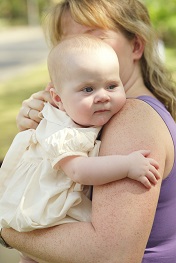
In addition to providing a sense of security, the attachment relationship serves other functions that promote the baby’s development.
Regulation of Arousal and Affect
“Arousal” refers to the subjective feeling of being “on alert,” with the accompanying physiological reactions of increased respiration and heartbeat and bodily tension. If arousal intensifies without relief, it begins to feel aversive and the infant becomes distressed. When this happens the infant sends out distress signals and moves toward the caregiver. In a secure attachment the infant is able to draw on the mother for help in regulating distress. The mother’s affective response provides soothing or stimulation to help the infant modulate arousal. Over time, infants and parents develop transactional patterns of mutual regulation to relieve the infant’s states of disequilibrium. Repeated successful mutual regulation of arousal helps the infant develop the ability to regulate arousal through his own efforts. Through the experience of being soothed, the infant internalizes strategies for self-soothing. As development proceeds, good self-regulation helps the child feel competent in controlling distress, negative emotions, and impulses to act out promoting the expression of feelings and communication. By 4-6 months the attachment relationship evolves into a vehicle for sharing positive feelings, and learning to communicate and to play. For example, a 6-month-old infant initiates a game of peek-a-boo (which has been previously taught by her father) by pulling a diaper over her face. Her father responds by saying, “Oh, you want to play, huh?” and pulls the diaper off, saying “peek-a-boo!” and smiling and looking into the baby’s eyes. The baby smiles and begins to wave her arms and kick her feet. The father says warmly, “Oh, you like to play peek-a-boo, don’t you?” The baby vocalizes, then begins to pull the diaper over her face again in order to continue the game. Interactions like this one reveal qualities of attachment relationships that support emotional and cognitive development: mutually-reinforcing, synchronous behaviors on the part of the parent and infant, a high degree of mutual involvement, attunement to each other’s feelings, and attentiveness and empathy on the part of the parent.
A Base for Exploration
From age 1 on, the attachment relationship becomes a base for exploration of the wider environment as well as the child’s developing competencies and her inner world. Attachment theorists consider the motivation to explore and learn about the world and to develop new skills to be as intrinsic in infants as attachment motivation. The confidence with which the child ventures out depends a great deal on her confidence in her attachments. If a toddler has a secure base in her attachment relationship, she will feel free to explore her environment, with the implicit awareness that the caregiver is available if needed.
How Attachment Shapes Future Development
The child gradually develops a working model of attachment based on how he has been cared for and responded to within the attachment relationship. Over the first few years of life, working models become stabilized as expectations of how relationships work, and what one can expect of other people in terms of responsiveness and care. Correspondingly, models of the self in relationships also develop. The young child internalizes assumptions about how effective she is in using relationships, how valued she is, and how worthy of receiving care. The infant whose attachment initiatives have been responded to appropriately over time develops working models which say, in essence: “I can expect that people will respond to me with interest, concern and empathy. My actions are effective in communicating my needs and maintaining my attachments.”
A central component of working models is a view of the self within relationships, which contributes strongly to the child’s self-representation. The child with a history of secure attachment is likely to develop a positive sense of self, while children with insecure attachments are more likely to develop disturbances in the view of self and in the capacity to maintain self-esteem. Working models also include a view of one’s ability to regulate arousal and cope with stress. Infants who have been effectively helped with regulation of arousal through the soothing and contingent responding of their caregivers develop effective internal and social strategies for regulating affect and arousal and become more competent at coping with stress. By contrast, infants who have experienced high levels of arousal and intense affect, without the help of mutual regulation, are likely to internalize a view of the self as ineffective or out of control and to develop maladaptive coping strategies, such as affective numbing or hyper-reactivity leading to aggression and tantrums.
 Once established, working models tend to become unconscious. They become filters and organizers of the child’s perceptions about relationships. They increasingly guide how the child appraises what is happening in relationships and how she behaves with others. By the third year, the working models developed through the child’s primary attachment relationships have become relatively stable, and are now applied to other relationships. The 3 year old with a history of secure attachment tends to expect that child care providers will be interested, supportive and responsive. The child with a history of insecure attachment may mistrust the intentions and emotional responsiveness of other adults. In either case, the child unconsciously attempts to organize, shape and perhaps control new relationships to make them fit her internal working models.
Once established, working models tend to become unconscious. They become filters and organizers of the child’s perceptions about relationships. They increasingly guide how the child appraises what is happening in relationships and how she behaves with others. By the third year, the working models developed through the child’s primary attachment relationships have become relatively stable, and are now applied to other relationships. The 3 year old with a history of secure attachment tends to expect that child care providers will be interested, supportive and responsive. The child with a history of insecure attachment may mistrust the intentions and emotional responsiveness of other adults. In either case, the child unconsciously attempts to organize, shape and perhaps control new relationships to make them fit her internal working models.
At the same time, assuming that parental behavior in relation to the child remains relatively constant, the child’s working models are continually being reinforced through ongoing transactions with parents. Although working models can change through changes in parenting style and experiences in new relationships, this becomes increasingly harder after they have become stabilized between ages 3-4. An obvious example is that many children who enter foster care following removal from the parents because of physical abuse behave in ways that seem intended to provoke abusive responses from foster parents. When the child projects working models in this way, the responses of others often reinforce working models, stabilizing them further. For example, if the foster parent reacts negatively (though not abusively) to the abused child’s provoking behavior, the child’s affective experience with a new caregiver feels consistent with abuse, and his working models are confirmed. However, many abused children do not continue to re-enact old relationships, but instead are gradually influenced by the responsive and empathic behavior of new caregivers. Although working models tend to be powerful and persistent, they can be changed through good care.
Longitudinal research by Alan Sroufe and his associates at University of Minnesota has found impressive links between quality of attachment in infancy and later development. Secure attachment in infancy and toddlerhood predicts social competence, good problem solving abilities, and other personality qualities associated with successful adaptation in later childhood, adolescence, and adulthood. Insecure attachment has been similarly linked to problematic behavior and social difficulties in school age children. Although other factors such as infant temperament and environmental risk factors influence outcomes, the overwhelming evidence of empirical studies makes clear that quality of attachment is a fundamental mediator of development.
Attachment Research
Attachment theory has become one of the most important constructs informing the study of human development. I do not have space to discuss the many directions attachment research has taken. (A good review of that research up to 1999 is represented in J. Cassidy & P. R. Shaver (Eds., 1999), “Handbook of Attachment,” New York: Guilford Press). Instead, I will briefly summarize research on patterns of attachment, in particular because it is so relevant to infant mental health practice.
In the 1960’s Mary Ainsworth did an observational field study of mother-infant interaction patterns of the Ganda people of Uganda. She found that two factors – maternal responsiveness and sensitivity, and infant reactions to separation – were the most important indicators of quality of attachment behavior of Ganda mothers and infants. Based on these observations, Ainsworth developed the “Strange Situation” procedure in order to assess the quality of attachment. This procedure aims to create mild but increasing stress on the attachment relationship, in order to observe the 12 to 18 month old infant’s attachment strategies and the degree of security of attachment. The most stressful episodes in the Strange Situation involve the mother’s leaving the infant with a stranger, returning briefly, and then, after the stranger leaves, leaving the baby alone very briefly. Ainsworth found that the infant’s response to the mother’s return was the most sensitive indicator of quality of attachment. Securely attached infants showed characteristic responses when reunited with the mother, and insecurely attached infants also reacted in distinctive ways.
Secure (Group B) infants reacted to the mother’s return with relief and pleasure, immediately seeking comfort from her if they were distressed, and calmed quickly in response to the mother’s soothing. Their history of responsive care gave them confidence their mother would be emotionally available to them following the stress of a brief separation.
Insecure-Avoidant (Group A) infants tended to ignore or avoid the mother at reunion and continued to play in an independent and self-reliant way. Given the normal importance of attachment for an infant, attachment theorists have described the Avoidant pattern as a defensive strategy. Ainsworth’s concurrent double-blind in-home study suggested why an avoidant defense might be needed: the Group A babies were frequently ignored and actively rejected by their mothers, who tended to reject or punish the infant for being distressed. Out of these interactions, Avoidant babies develop precocious defenses against feelings of distress. Distress is split off from consciousness, and the defense mechanism of isolation of affect emerges. Avoidant infants tend not to show upset in situations that are distressing for most infants; rather they appear somber, expressionless or self-contained. The Avoidant pattern should not be equated with non-attachment. Rather, the defensive strategy of avoidance is the baby’s way of staying close to the parent while protecting herself from overt rejection. The Avoidant pattern predicts inappropriate self-reliance and negativity and mistrust in relationships in future development.
Insecure-Ambivalent/Resistant (Group C) infants showed behavior in the Strange Situation that conveyed a strong need for attachment but a lack of confidence in its availability. They reacted with great distress to the separation, could not be soothed by their mothers, and angrily resisted comforting even though they clearly wanted it. The in-home study described the mothers of ambivalent infants as inconsistently responsive to their infants’ attachment-seeking behavior. The infants’ heightened affect and ambivalent behavior reflect their anxious uncertainty about how their parent will respond. The C pattern predicts continuing preoccupation with attachment concerns and problems functioning autonomously in later development.
Mary Main and her colleagues developed a protocol, the Adult Attachment Interview, that reliably assesses attachment styles in parents. What distinguishes “Secure” adults is their ability to speak openly and coherently about, to understand, and to integrate their early attachment experiences. “Insecure” adults (in categories that parallel the A, C, and D infant classifications) have difficulty giving coherent accounts of their own attachment experiences, rely on defensive processes that make integration of experience difficult, and tend to either dismiss the importance of attachment or to remain preoccupied with anxiety about their attachments. Independent assessments of the infants of parents studied using the Adult Attachment Interview show that adults in the Secure category have infants who are also judged secure, while Insecure adults have infants who are classified into one of the insecure categories.
The Attachment Perspective in Infant Mental Health Practice
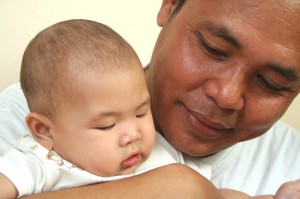 The utility of the research findings that have validated attachment theory is that they orient us to observe interactional sequences and to look for congruency between parental working models of attachment and infant/child attachment patterns. For example, on a home visit a worker notes that a parent treats her baby roughly while changing his diaper, and seems frustrated over having to care for him. At the same time, the baby does not look at his mother, turning his head away when she comes near. These observations, which must be supported by future observations, suggest an Avoidant attachment.
The utility of the research findings that have validated attachment theory is that they orient us to observe interactional sequences and to look for congruency between parental working models of attachment and infant/child attachment patterns. For example, on a home visit a worker notes that a parent treats her baby roughly while changing his diaper, and seems frustrated over having to care for him. At the same time, the baby does not look at his mother, turning his head away when she comes near. These observations, which must be supported by future observations, suggest an Avoidant attachment.
Parents with working models derived from histories of secure attachment are responsive to their children, who in turn tend to develop secure attachments and positive working models. In contrast, parents who dismiss the importance of attachment are likely to dismiss their children’s needs for comforting and nurturance. When these negative attitudes carry over into caretaking transactions, the infant is likely to adopt the Avoidant pattern.
Although research contributes to our clinical understanding, it is important to distinguish between research instruments and clinical practice. The Ainsworth Strange Situation and Main’s Adult Attachment Interview reliably reveal attachment patterns when applied to individuals in a research setting. However, they are not directly transferable to practice. Research procedures require adherence to protocol, while clinical practice requires the flexibility to respond to the needs and manner of presentation of clients, and emphasizes the importance of developing a collaborative relationship with the parent. Nevertheless, knowledge of attachment patterns derived from research allows the infant clinician to observe for interactions and behavior that suggest a particular type of attachment.
Due to space considerations a bibliography is not included. Complete references are found in D. Davies text (2004). Child Development: A Practitioner’s Guide (2nd Edition). New York: Guilford Press.


